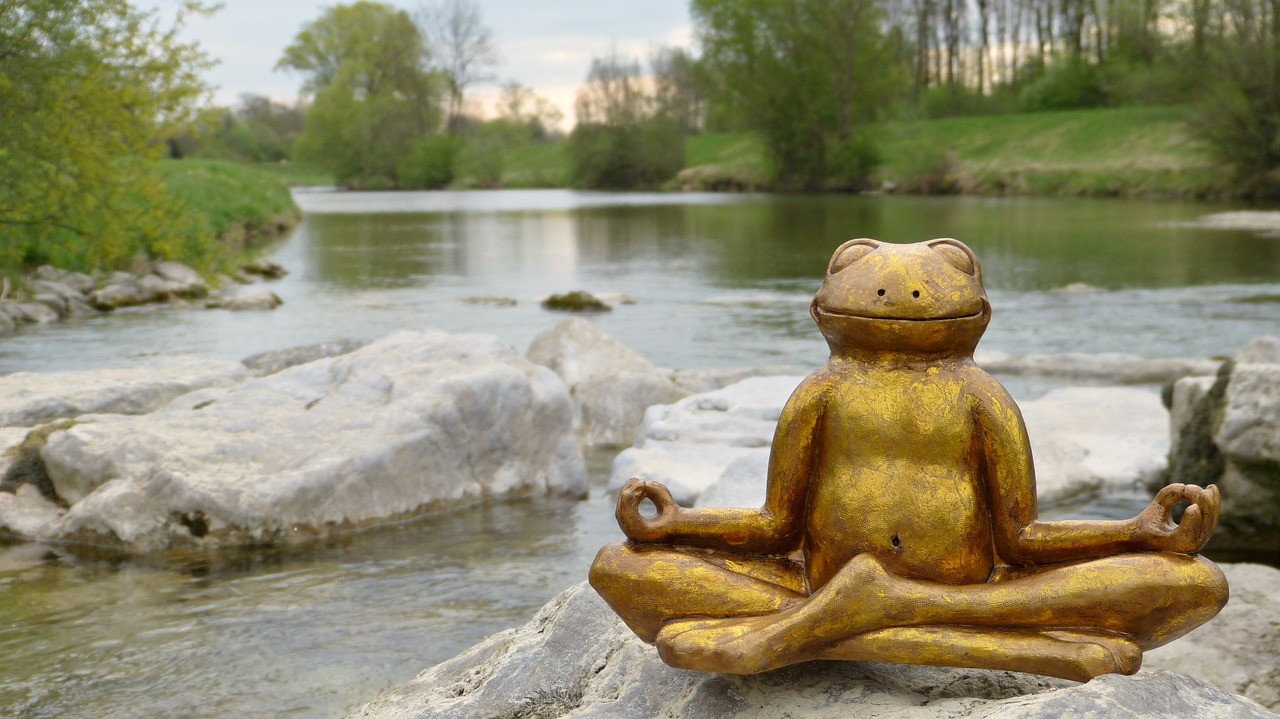
Mindfulness, Flow & Coaching—Oh, My!
[Kim Menig joined the Happy Brain Science team in 2018. She’s an International Coach Federation (ICF) member. ]
As a (nerdy) teenager in the 90’s, I remember feeling a little sad that the mysteries of the human mind might be fully unraveled by the time I was an adult. Given the explosive rate of psychology and neuroscience discoveries, I figured everything would get mapped out within a decade. It was thrilling to be alive at a moment when new insights were emerging every day. But the party was sure to wind down.
Of course—much like the hovercraft I still don’t have—that vision of the future hasn’t yet come to pass. Our understanding of the brain has grown exponentially, but there’s so much left to explore. Over time, I’ve gained appreciation for how scientific inquiry builds on itself. Each eureka! moment gives rise to the next question. And it’s often a question we didn’t have the tools or awareness to ask before.
Which is how I found myself pondering the relationship between two key tenets of modern positive psychology: mindfulness and flow. In many ways, they overlap. Both are considered optimal psychological states. Evidence has emerged that we can intentionally cultivate them, resulting in improved performance and well-being. But the more I thought about it, the more I wondered how they interact with each other. Is one a gateway to the other? Does one encompass the other? Can we access both at the same time?
Here’s one reason why it matters to me: I’m a coach. I want to know the best way to support people to maximize their potential, achieve their goals, and experience life satisfaction. As part of that, I’m eager to understand how my own mental state impacts my effectiveness in a coaching session.
Mindfulness & Flow: Which Way Do They Go?
It turns out that researchers are still investigating the connection between mindfulness and flow. Some research suggests that mindfulness training can increase flow. One study I came across, “The Experiential Incompatibility of Mindfulness and Flow Absorption” tries to break things down a bit further:
“Intuitively, mindfulness and flow seem to go together. Both involve using the mind in an efficient, high-quality way, and both are seen as signals of good mental hygiene and health. Thus, many researchers have assumed that boosting people’s ability to be mindful should also boost their ability to experience flow (Aherne et al., 2011; Kaufman, Glass, & Arnkoff, 2009; Thienot et al., 2014). We found evidence for the opposite conclusion: that boosting a person’s ability to remain mindful during an activity might actually undermine their ability to get absorbed in that activity…
It is important to note, however, that this negative relationship was found only for the absorption facet of flow, that is, the feeling of being carried away by activity, with an altered sense of time and a loss of self-awareness. This was expected since it seems logical that one cannot both stand on the banks of a stream and be washed down that stream at the same time. A different pattern was found for the felt control facet of flow, which was nonassociated or positively associated with mindfulness…These findings provide a more nuanced perspective both upon the flow construct itself and upon the question of how flow relates to mindfulness.”
The study concludes by raising ideas for further exploration. It doesn’t pretend to be the last word on the subject. That’s great news for those of us who aren’t researchers, but who delight in a continued stream of new discoveries! But in the meantime, as we’re trying to apply the latest research to our lives, where does it leave us?
I’m answering the question in 2 ways for myself:
1. I’m currently trying an approach called “somatic transformation.” According to this approach, a coach’s ability to be mindfully attuned to their own experience expands their ability to be fully present with the person they’re coaching. It’s a bit counter-intuitive. It seems like if I want to pay maximum attention to someone else, I should put all my focus on them, and ignore what’s going on with me. But staying present with my physical awareness actually opens up more awareness of the other person. Embodying that process also invites the other person to tap more deeply into their own experience.
As I cultivate this type of mindfulness, I feel intrigued by how it relates to getting into flow while coaching. If the findings above hold water (heh), I may become less likely to get “carried away” by the coaching experience. At the same time, I may be more likely, with practice, to draw on my fully-present awareness with “felt control”—i.e., a sense that my intentional activity is occurring effortlessly.
2. One of my favorite phrases we use at Happy Brain Science is “test and learn.” It captures what I love about applying psychology and neuroscience research to improve our human experience. At some point, we all have to become our own experimenters. Each of our lives is its own exciting laboratory, full of the ongoing potential to uncover new truths. By testing the ideas we find compelling—and really observing what does and doesn’t work for us—we reveal the unfolding questions that keep us moving forward.
And that? It’s what coaching is all about.
When have you experienced flow? How about mindfulness? How do they interact for you? Thanks for sharing your insights in the comments! We always enjoy a good conversation.
[Kim Menig joined the Happy Brain Science team in 2018. She’s an International Coach Federation (ICF) member. ]